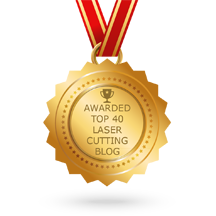
Warning: This is a blog, not a how-to guide. I won’t be giving away any secrets today. If you want those, it’ll cost you $$$!
This is a hot topic. Aluminum is a popular material due to its light weight, ease of machining, relatively low cost, and good wear and corrosion characteristics. It is commonly GTAW and MIG welded – think bicycle frames, hand rails, and truck tool boxes.
Aluminum is rapidly replacing other materials (stainless steel, steel) in much smaller applications - battery cases, tiny enclosures, and handheld devices to name a few. This requires welding techniques that are both cost effective and capable of precision heat input.
Aluminum can be challenging to weld due to high thermal conductivity and a low melting point. In thin parts, heat can rapidly build up and turn a precision component into a puddle of goo. A delicate touch is required. Enter laser technology.
This blog wouldn’t be very interesting if there weren’t a plot twist. Here it is – aluminum is highly reflective to laser energy. It requires a particularly bright laser to get energy into the part without doing more harm than good (or reflecting back into your peepers). How fortunate that new laser technology has evolved to fit the bill. As little as a decade ago, laser welding aluminum was considered to be limited to very specific applications.
Ok, so if you’ve read any of my other blogs, you know I like to use examples. So, here’s one from a battery case application:
A prototyping house, specializing in making stainless steel prismatic cans for the battery industry, was looking to make a new line of prototypes from aluminum to save weight and impress their customers. Their old style stainless cans could be welded in a variety of ways, but these new aluminum cans required very precise heat input to keep distortion to a minimum and prevent overheating during the weld process.
A high power NIR laser was chosen for the application, and in conjunction with form tools and proper heat sinking (see our blog on heat sinking), excellent welds were achieved and thousands of pre-production cases were fabricated in very short order. Not only were the welds structurally sound, they were cosmetically excellent, and the process time was shorter than that for the stainless cans.
Not all aluminum alloys are weldable, so be sure to speak with an expert when you approach your next small-scale aluminum project.
Got a question or comment? Feel free to leave it in the space below.










